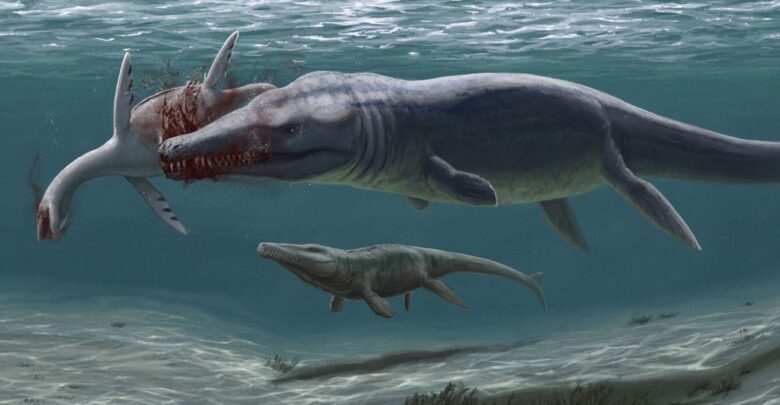

Experts from multiple European institutions helped prove that fossil teeth dating back 138 million years — found more than a hundred years ago in Europe — are from a previously unknown species of extinct sea crocodiles.
The teeth were found in a quarry near the Czech town of Stramberk in 1912. Since then, they have been kept at the Natural History Museum in Vienna without any detailed taxonomic information.
But a recent study has concluded that they belonged to previously unknown creatures.
The teeth come from members of the extinct marine crocodile family Metriorhynchidae, which dates back around 138 million years to the Early Cretaceous period.

Alexander Lukeneder, palaeontologist at the Natural History Museum Vienna, worked with experts at other European institutions to investigate the historical fossils.
Metriorhynchid crocodiles belong to the group of archosaurs, which also encompasses dinosaurs, pterosaurs and birds. Among the archosaur group, the sea crocodiles were most optimally adapted to marine waters.
The animals inhabited shallow marine ecosystems in North and South America and the European archipelago. Scientists estimate they would have been around 23 feet long.
Where modern-day crocodiles have limbs, the extinct species would have had fins. They also would have had moderately elongated snouts in comparison.
The species are believed to be the geologically youngest representatives of metriorhynchid crocodiles. They disappeared during the Cretaceous period, long before the extinction of the dinosaurs.
Analysis of the enamel on the teeth showed that the two crowns belonged to different animal genera — Plesiosuchus and Torvoneustes.
While Plesiosuchus hunted other marine reptiles such as pliosaurs, Torvoneustes fed on fish and ammonites. According to research by Mark T. Young, a contributor to the recent study, Plesiosuchus had a robust skull and strong bite force which made the animal an apex predator. Torvoneustes were over 15 feet in length while Plesiosuchus measured over 22 feet.
The scientists who were part of the team that made the discovery came from multiple European universities and museums, including the Natural History Museum in Bielefeld, the Polish Academy of Sciences, the Institute for Geological Engineering in the Czech Republic and the School of GeoSciences at the University of Edinburgh.
The study was published in the open access scientific journal Acta Palaeontologica Polonica.
According to the study, the findings show the power of historic collections for modern discoveries. The study said scientists can reveal “new secrets” from collections, even after decades of modern methodology and insight from specialists.
(Edited by Ali McCadden and Kristen Butler)
The post Croccy Horror: Scientists Find Teeth From Massive 138 Million-Year-Old Crocodile appeared first on Zenger News.



